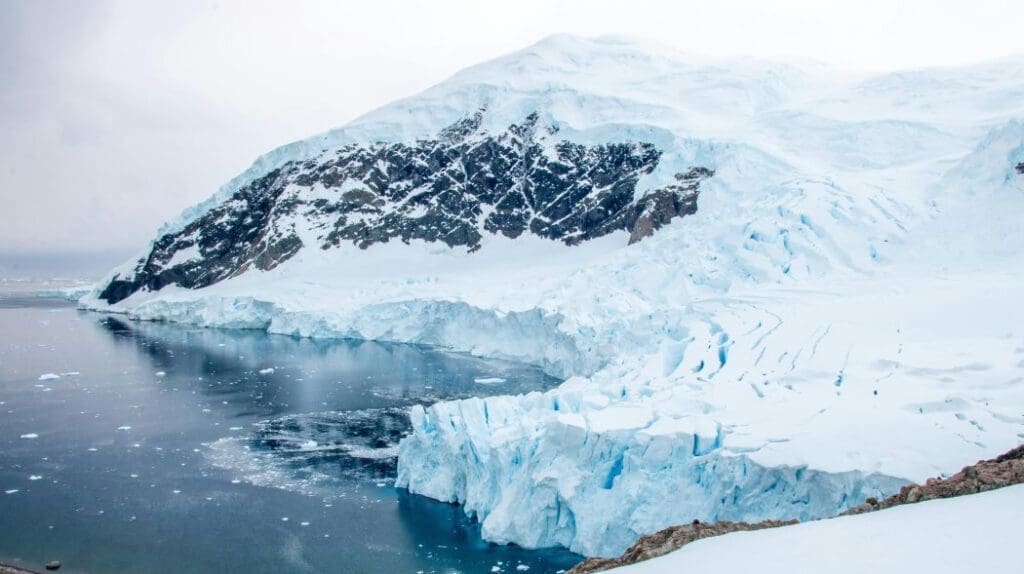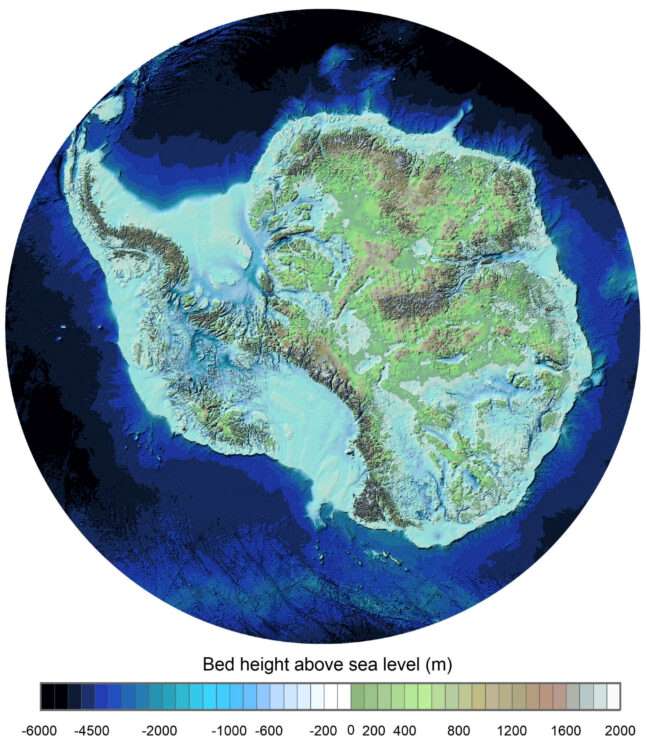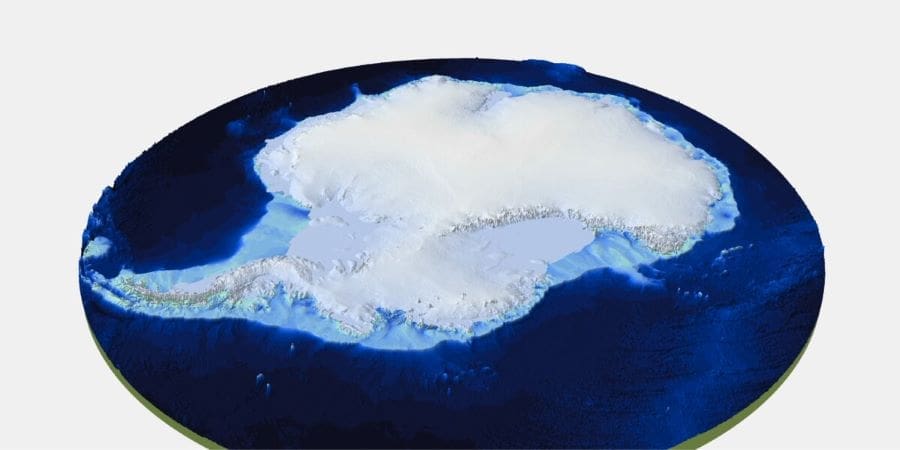Discover the latest articles from leading science journals in the Muser Press weekly roundup, showcasing impactful research published this week.
In brief:
Melting ice, more rain drive Southern Ocean cooling
Global climate models predict that the ocean around Antarctica should be warming, but in reality, those waters have cooled over most of the past four decades.
The discrepancy between model results and observed cooling, Stanford University scientists have now found, comes down mainly to missing meltwater and underestimated rainfall.
“We found that the Southern Ocean cooling trend is actually a response to global warming, which accelerates ice sheet melting and local precipitation,” said Earle Wilson, an assistant professor of Earth system science in the Stanford Doerr School of Sustainability and senior author of the study published in Geophysical Research Letters.
As rising temperatures melt Antarctica’s ice sheet and cause more precipitation, the Southern Ocean’s upper layer is growing less salty – and thus, less dense. This creates a lid that limits the exchange of cool surface waters with warmer waters below. “The fresher you make that surface layer, the harder it is to mix warm water up,” Wilson explained.
But this freshening is not fully represented in state-of-the-art climate models – a flaw that scientists have long recognized as a major source of uncertainty in projections of future sea level rise. “The impact of glacial meltwater on ocean circulation is completely missing from most climate models,” Wilson said.

Reconciling global discrepancies
The mismatch between observed and simulated sea surface temperatures around Antarctica is part of a larger challenge for scientists and governments seeking to prepare for climate impacts. Global climate models generally do not accurately simulate the cooling observed over the past 40 years in the Southern Ocean and the eastern Pacific around the equator or the intensity of the warming observed in the Indian and western Pacific Oceans. There is also a discrepancy between simulations and the observed frequency of La Niña weather conditions, defined by the eastern Pacific being colder than average.
Warming events in the Southern Ocean over roughly the past eight years have somewhat diminished the 40-year-long cooling trend. But if sea surface temperature trends around the globe continue to resemble patterns that have emerged in recent decades, rather than shifting toward the patterns predicted in simulations, it would change scientists’ expectations for some near-term impacts from climate change. “Our results may help reconcile these global discrepancies,” Wilson said.
Oceans globally have absorbed more than a quarter of the carbon dioxide emitted by human activities and more than 90% of the excess heat trapped in our climate system by greenhouse gases. “The Southern Ocean is one of the primary places that happens,” said lead study author Zachary Kaufman, a postdoctoral scholar in Earth system science.
As a result, the Southern Ocean has an outsized influence on global sea level rise, ocean heat uptake, and carbon sequestration. Its surface temperatures affect El Niño and La Niña weather patterns, which influence rainfall as far away as California.
A surprising discovery
To understand the physical mechanism for Southern Ocean cooling – and enable more reliable projections of its future impacts on Earth’s climate system – Wilson and Kaufman set out to determine how much sea surface temperatures around Antarctica in simulations have cooled in response to freshening. “We naively figured it wouldn’t matter exactly where you put the freshwater,” Wilson said.
The researchers were surprised to discover that surface temperatures are much more sensitive to freshwater fluxes concentrated along the coast than those splashing more broadly across the ocean as rain.
“Applying freshwater near the Antarctic margin has a bigger influence on sea ice formation and the seasonal cycle of sea ice extent, which then has downstream impacts on sea surface temperature,” Wilson said. “This was a surprising result that we are eager to explore further in future work.”
Quantifying the effect of missing meltwater
Previous studies have sought to quantify how Antarctic meltwater affects the global climate system by adding some amount of freshwater to a single climate model simulation, in what scientists have dubbed “hosing” experiments. “You get very divergent results, because people set up their experiments slightly differently, and the models are a little different, and it’s unclear if these are really apples-to-apples comparisons,” Wilson explained.
For the new study, the researchers sought to avoid this issue by working with a collection of simulations. Using a new ensemble of coupled climate and ocean models from the recently launched Southern Ocean Freshwater Input from Antarctica (SOFIA) Initiative, as well as an older set of models simulating ocean density and circulation changes, the authors analyzed how much simulated sea surface temperatures changed in response to the actual freshwater inputs between 1990 and 2021.
“There’s been some debate over whether that meltwater is enough over the historical period to really matter,” said Kaufman. “We show that it does.”
With the new method, which incorporates simulations from 17 different climate models, the researchers found missing freshwater explains up to 60% of the mismatch in observed and predicted Southern Ocean surface temperatures between 1990 and 2021.
“We’ve known for some time that ice sheet melting will impact ocean circulation over the next century and beyond,” Wilson said. “Our results provide new evidence that these meltwater trends are already altering ocean dynamics and possibly the global climate.”
***
Additional co-authors include Yuchen Li, an undergraduate student in the Physics Department in the Stanford School of Humanities and Sciences, Ariaan Purich of Monash University, and Rebecca Beadling of Temple University.
This research was supported by Stanford University, a grant from the NSF Division of Polar Programs, and the Australian Research Council Special Research Initiative for Securing Antarctica’s Environmental Future. Li was supported by the Sustainability, Engineering and Science – Undergraduate Research (SESUR) program in the Stanford Doerr School of Sustainability.
Journal Reference:
Kaufman, Z., Wilson, E., Purich, A., Beadling, R., & Li, Y., ‘The impact of underestimated Southern Ocean freshening on simulated historical sea surface temperature trends’, Geophysical Research Letters 52, e2024GL112639 (2025). DOI: 10.1029/2024GL112639
Article Source:
Press Release/Material by Josie Garthwaite | Stanford University
Most accurate map of Antarctica published
Known as Bedmap3, it incorporates more than six decades of survey data acquired by planes, satellites, ships and even dog-drawn sleds. The results are published in the journal Scientific Data.
The map gives us a clear view of the white continent as if its 27 million cubic km of ice have been removed, revealing the hidden locations of the tallest mountains and the deepest canyons.

One notable revision to the map is the place understood to have the thickest overlying ice. Earlier surveys put this in the Astrolabe Basin, in Adélie Land. However, data reinterpretation reveals it is in an unnamed canyon at 76.052°S, 118.378°E in Wilkes Land. The ice here is 4,757 m thick, or more than 15 times the height of the Shard, the UK’s tallest skyscraper.
Bedmap3 is now set to become an essential tool in the quest to understand how Antarctica might respond to a warming climate, because it enables scientists to study interactions between the ice sheet and the bed.
Dr Hamish Pritchard, a glaciologist at BAS and lead author on the study detailing the new map, says: “This is the fundamental information that underpins the computer models we use to investigate how the ice will flow across the continent as temperatures rise. Imagine pouring syrup over a rock cake – all the lumps, all the bumps, will determine where the syrup goes and how fast. And so it is with Antarctica: some ridges will hold up the flowing ice; the hollows and smooth bits are where that ice could accelerate.”
Bedmap3, as the name suggests, is the third attempt to draw a picture of Antarctica’s rock bed that began in 2001, but this new effort represents a dramatic refinement. It includes more than double the number of previous data points (82 million), rendered on a 500 m grid spacing.
Big knowledge gaps have been filled by recent surveys in East Antarctica, including around the South Pole, along the Antarctic Peninsula and West Antarctic coastlines, and in the Transantarctic Mountains.
The outline of deep valleys is better represented. So too are those places where rocky mountains stick up through the ice. The latest satellite data have also more accurately recorded the height and shape of the ice sheet and the thickness of the floating ice shelves that push out over the ocean at the continent’s margin.
The map also records a comprehensive new, continent wide view of grounding lines – the places where ice at the edge of the continent meets the ocean and and begins to float.

The landscape of the rock bed under Antarctica’s ice is sensed by a variety of techniques, including radar, seismic reflection (sound waves) and gravity measurements.
Subtracting this topography from the shape and elevation of the ice above provides some fascinating statistics on the polar south.
- Total volume of Antarctic ice, including ice shelves: 27.17 million cu km
- Total area of Antarctic ice, including ice shelves: 13.63 million sq km
- Mean thickness of Antarctic ice, including ice shelves: 1,948 m. (Excluding ice shelves: 2,148 m)
- Potential global sea-level rise if all ice melted: 58 m
Peter Fretwell, mapping specialist and co-author at BAS, says: “In general, it’s become clear the Antarctic Ice Sheet is thicker than we originally realised and has a larger volume of ice that is grounded on a rock bed sitting below sea-level. This puts the ice at greater risk of melting due to the incursion of warm ocean water that’s occurring at the fringes of the continent. What Bedmap3 is showing us is that we have got a slightly more vulnerable Antarctica than we previously thought.”
Journal Reference:
Pritchard, H.D., Fretwell, P.T., Fremand, A.C. et al., ‘Bedmap3 updated ice bed, surface and thickness gridded datasets for Antarctica’, Scientific Data 12, 414 (2025). DOI: 10.1038/s41597-025-04672-y
Article Source:
Press Release/Material by British Antarctic Survey (BAS)
Other science articles published this week
Comparative effects of different types and doses of biochar on soil quality indicators and arugula growth under saline conditions
ELsaman, N.K., Amin, A.EE.A.Z., El-Razek, M.A. et al. (2025) | DOI: https://doi.org/10.1038/s41598-025-92816-w | Scientific Reports
Pattern asymmetry in extreme Indian Ocean dipoles shapes marine heat-height compound extremes around coastal Indonesia
Xie, M., Wang, JZ., Zhang, L. et al. (2025) | DOI: https://doi.org/10.1038/s43247-025-02184-6 | Communications Earth & Environment
On the relationship between monthly mean surface temperature and tornado days in the United States
Hoogewind, K.A., Gensini, V.A. & Brooks, H.E. (2025) | DOI: https://doi.org/10.1038/s41612-025-00993-2 | npj Climate and Atmospheric Science
Heterogeneous pressure on croplands from land-based strategies to meet the 1.5 °C target
Gao, P., Gao, Y., Ou, Y. et al. (2025) | DOI: https://doi.org/10.1038/s41558-025-02294-1 | Nature Climate Change
Increased multi-year La Niña since 1960s driven by internal climate variability
Liu, S., Dong, L., Wu, L. et al. (2025) | DOI: https://doi.org/10.1038/s41612-025-00994-1 | npj Climate and Atmospheric Science
Carbon footprint and greenhouse gas emissions of different rice-based cropping systems using LCA
Jahangir, M.M.R., Aguilera, E., Ferdous, J. et al. (2025) | DOI: https://doi.org/10.1038/s41598-025-90157-2 | Scientific Reports
Structural shifts in China’s oil and gas CH4 emissions with implications for mitigation efforts
Luo, J., Wang, H., Li, H. et al. (2025) | DOI: https://doi.org/10.1038/s41467-025-58237-z | Nature Communications
Machine learning shows a limit to rain-snow partitioning accuracy when using near-surface meteorology
Jennings, K.S., Collins, M., Hatchett, B.J. et al. (2025) | DOI: https://doi.org/10.1038/s41467-025-58234-2 | Nature Communications
Efficacy of machine learning in simulating precipitation and its extremes over the capital cities in North Indian states
Tandon, A., Awasthi, A. & Pattnayak, K.C. (2025) | DOI: https://doi.org/10.1038/s41598-024-84360-w | Scientific Reports
Combining phylogeography and climate models to track the diversification and spread of Phlebotomus simici
Kniha, E., Koblmüller, S., Platzgummer, K. et al. (2025) | DOI: https://doi.org/10.1038/s41598-025-94601-1 | Scientific Reports
Neglecting future sporadic volcanic eruptions underestimates climate uncertainty
Chim, M.M., Aubry, T.J., Smith, C. et al. (2025) | DOI: https://doi.org/10.1038/s43247-025-02208-1 | Communications Earth & Environment
The dominant role of aerosol’s CCN effect in cloud glaciation
Munawar, I., Zhu, Y., Wang, M. et al. (2025) | DOI: https://doi.org/10.1038/s41612-025-00999-w | npj Climate and Atmospheric Science
Antecedent rainfall, wind direction and seasonal effects may amplify the risk of wind-driven power outages in the UK
Manning, C., Wilkinson, S., Fowler, H.J. et al. (2025) | DOI: https://doi.org/10.1038/s43247-025-02176-6 | Communications Earth & Environment
Deep ocean cooling and freshening from Subpolar North Atlantic reaches Subtropics at 26.5°N
Chomiak, L.N., Volkov, D.L., Johns, W.E. et al. (2025) | DOI: https://doi.org/10.1038/s43247-025-02170-y | Communications Earth & Environment
Freshwater inflows to closed basins of the Andean plateau in Chile, Argentina, and Bolivia
Kirshen, A.B., Moran, B.J., Munk, L.A. et al. (2025) | DOI: https://doi.org/10.1038/s43247-025-02130-6 | Communications Earth & Environment
High-latitude Southern Ocean eddy activity projected to evolve with anthropogenic climate change
Beech, N., Rackow, T., Semmler, T. et al. (2025) | DOI: https://doi.org/10.1038/s43247-025-02221-4 | Communications Earth & Environment
The January 2022 Hunga eruption cooled the southern hemisphere in 2022 and 2023
Gupta, A.K., Mittal, T., Fauria, K.E. et al. (2025) | DOI: https://doi.org/10.1038/s43247-025-02181-9 | Communications Earth & Environment
Precession-paced late Maastrichtian bottom-water dynamics
Fischer, A., Batenburg, S.J., Bahr, A. et al. (2025) | DOI: https://doi.org/10.1038/s43247-025-02219-y | Communications Earth & Environment
Climatology of Tehran surface heat Island: a satellite-based spatial analysis
Zargari, M., Mofidi, A., Entezari, A. et al. (2025) | DOI: https://doi.org/10.1038/s41598-025-95367-2 | Scientific Reports
A pronounced decline in northern vegetation resistance to flash droughts from 2001 to 2022
Zhang, M., Yuan, X., Zeng, Z. et al. (2025) | DOI: https://doi.org/10.1038/s41467-025-58253-z | Nature Communications
Global distribution, quantification and valuation of the biological carbon pump
Berzaghi, F., Pinti, J., Aumont, O. et al. (2025) | DOI: https://doi.org/10.1038/s41558-025-02295-0 | Nature Climate Change
Impacts of abatement in anthropogenic emissions in the context of China’s carbon neutrality on global photovoltaic potential
Hu, Z., Wang, Z., Guo, Z. et al. (2025) | DOI: https://doi.org/10.1038/s41612-025-01005-z | npj Climate and Atmospheric Science
Understanding spatiotemporal variation of heatwave projections across US cities
Bhattarai, S., Bokati, L., Sharma, S. et al. (2025) | DOI: https://doi.org/10.1038/s41598-025-95097-5 | Scientific Reports
Hedging our bet on forest permanence for the economic viability of climate targets
Windisch, M.G., Humpenöder, F., Merfort, L. et al. (2025) | DOI: https://doi.org/10.1038/s41467-025-57607-x | Nature Communications
Combining surface drifters and high resolution global simulations enables the mapping of internal tide surface energy
Caspar-Cohen, Z., Ponte, A., Lahaye, N. et al. (2025) | DOI: https://doi.org/10.1038/s41598-025-92662-w | Scientific Reports
Improved seamless mapping of surface O3 concentrations using an integrated deep learning framework
Li, T., Wu, J., Wang, Y. et al. (2025) | DOI: https://doi.org/10.1038/s41612-025-01007-x | npj Climate and Atmospheric Science
Tillage intensity reductions when combined with yield increases may slow soil carbon saturation in the central United States
Joshi, D.R., Clay, D.E., Alverson, R. et al. (2025) | DOI: https://doi.org/10.1038/s41598-025-95388-x | Scientific Reports
Tracking regional CH4 emissions through collocated air pollution measurement: a pilot application and robustness analysis in China
Li, Y., Zheng, B. (2025) | DOI: https://doi.org/10.1038/s41612-025-01011-1 | npj Climate and Atmospheric Science
Expansion of aquatic vegetation in northern lakes amplified methane emissions
Liu, J., Huang, H., Hou, X. et al. (2025) | DOI: https://doi.org/10.1038/s41561-025-01667-7 | Nature Geoscience
Optimizing energy systems of livestock farms with computational intelligence for achieving energy autonomy
Tryhuba, A., Hutsol, T., Čėsna, J. et al. (2025) | DOI: https://doi.org/10.1038/s41598-025-92836-6 | Scientific Reports
Global coupled dynamics of tropical easterly waves and tropical cyclone genesis
Du, X., Chu, JE., Jin, FF. et al. (2025) | DOI: https://doi.org/10.1038/s41612-025-01014-y | npj Climate and Atmospheric Science
Escalating wind power shortages during heatwaves
You, J., Yin, F. & Gao, L. (2025) | DOI: https://doi.org/10.1038/s43247-025-02239-8 | Communications Earth & Environment
Dynamics of intensification of extreme precipitation events over the Arabian Peninsula derived from CMIP6 simulations
Pathak, R., Dasari, H.P., Ashok, K. et al. (2025) | DOI: https://doi.org/10.1038/s41612-025-01016-w | npj Climate and Atmospheric Science
Interdecadal variability of tropical cyclone intensification rates in the Western North Pacific
Wang, H., Liang, C., Lin, F. et al. (2025) | DOI: https://doi.org/10.1038/s41612-025-01001-3 | npj Climate and Atmospheric Science
Constrained Earth system models show a stronger reduction in future Northern Hemisphere snowmelt water
Chai, Y., Miao, C., Gentine, P. et al. (2025) | DOI: https://doi.org/10.1038/s41558-025-02308-y | Nature Climate Change
Leveraging ecosystems responses to enhanced rock weathering in mitigation scenarios
Gaucher, Y., Tanaka, K., Johansson, D.J.A. et al. (2025) | DOI: https://doi.org/10.1038/s41467-025-58284-6 | Nature Communications
Wave driven cross shore and alongshore transport reveal more extreme projections of shoreline change in island environments
Moskvichev, R.U., Mikkelsen, A.B., Anderson, T.R. et al. (2025) | DOI: https://doi.org/10.1038/s41598-025-95074-y | Scientific Reports
Predicted climate-induced range shifts and conservation challenges of the western barbastelle bat (Barbastella barbastellus)
Górska, M., Wysocki, A. & Apoznański, G. (2025) | DOI: https://doi.org/10.1038/s41598-025-95141-4 | Scientific Reports
A fast physics-based perturbation generator of machine learning weather model for efficient ensemble forecasts of tropical cyclone track
Pu, J., Mu, M., Feng, J. et al. (2025) | DOI: https://doi.org/10.1038/s41612-025-01009-9 | npj Climate and Atmospheric Science
Growth variability of farm grown teak in response to climatic and soil factors across three agroclimatic zones of Tamil Nadu, India
Ashick Rajah, R., Radhakrishnan, S., Balasubramanian, A. et al. (2025) | DOI: https://doi.org/10.1038/s41598-025-92770-7 | Scientific Reports
Unveiling the drivers of environmental performance by investigating the Nexus of energy, economic complexity and institutional quality in G7 nations
Cai, Y., Li, X., Zhao, X. et al. (2025) | DOI: https://doi.org/10.1038/s41598-024-81727-x | Scientific Reports
Volcanic aerosols lend causality to the indicated substantial susceptibility of clouds to aerosol over global oceans
Wang, X., Mao, F., Rosenfeld, D. et al. (2025) | DOI: https://doi.org/10.1038/s41612-025-00974-5 | npj Climate and Atmospheric Science
Interdecadal variability of terrestrial water storage since 2003
Buzzanga, B., Hamlington, B., Fasullo, J. et al. (2025) | DOI: https://doi.org/10.1038/s43247-025-02203-6 | Communications Earth & Environment
Opposing trends in winter Atmospheric River over the Western and Eastern US during the past four decades
Dong, W., Zhao, M., Tan, Z. et al. (2025) | DOI: https://doi.org/10.1038/s41612-025-00998-x | npj Climate and Atmospheric Science
Divergent effects of temperature and precipitation on water flow into the largest lake on the Tibetan Plateau
Wang, Y., Wang, L., Wang, L. et al. (2025) | DOI: https://doi.org/10.1038/s41612-025-01017-9 | npj Climate and Atmospheric Science
Permafrost thawing under overlaying salt water
Yumin Wang et al. (2025) | DOI: https://doi.org/10.1126/sciadv.adp2808 | Science Advances
Alternatives to photorespiration: A system-level analysis reveals mechanisms of enhanced plant productivity
Edward N. Smith et al. (2025) | DOI: https://doi.org/10.1126/sciadv.adt9287 | Science Advances
Anatomy of a foreseeable disaster: Lessons from the 2023 dam-breaching flood in Derna, Libya
Moshe Armon et al. (2025) | DOI: https://doi.org/10.1126/sciadv.adu2865 | Science Advances
Abrupt sea level rise and Earth’s gradual pole shift reveal permanent hydrological regime changes in the 21st century
Ki-Weon Seo et al. (2025) | DOI: https://doi.org/10.1126/science.adq6529 | Science
Physiology and climate change explain unusually high similarity across marine communities after end-Permian mass extinction
Jood A. Al Aswad et al. (2025) | DOI: https://doi.org/10.1126/sciadv.adr4199 | Science Advances
Anthropogenic activity and climate change exacerbate the spread of pathogenic bacteria in the environment
Yu Geng et al. (2025) | DOI: https://doi.org/10.1126/sciadv.ads4355 | Science Advances
Hedonic price model of Hawaiʻi ʻAhi Tuna (Thunnus obesus and Thunnus albacares) market: Implications of climate change and shark depredation
Chan HL, Kobayashi D, Suca J (2025) | DOI: https://doi.org/10.1371/journal.pclm.0000595 | PLOS Climate
Wellbeing, nature connection and vaccine attitudes: A convergent mixed methods study in Wim Hof Method practitioners
Huish JL, Fisher Z, Isham A, Kemp AH (2025) | DOI: https://doi.org/10.1371/journal.pmen.0000281 | PLOS Mental Health
Tetrapod species–area relationships across the Cretaceous–Paleogene mass extinction
R.A. Close & B.R. Reijenga (2025) | DOI: https://doi.org/10.1073/pnas.2419052122 | PNAS
Most Christian American religious leaders silently believe in climate change, and informing their congregation can help open dialogue
S. Syropoulos & G. Sparkman (2025) | DOI: https://doi.org/10.1073/pnas.2419705122 | PNAS
Competition response of cloud supersaturation explains diminished Twomey effect for smoky aerosol in the tropical Atlantic
J.L. Dedrick, C.N. Pelayo et al. (2025) | DOI: https://doi.org/10.1073/pnas.2412247122 | PNAS
Climate change amplifies neurotoxic methylmercury threat to Asian fish consumers
M. Wu,X. Wu,A. Saiz-Lopez,P.J. Blanchfield,H. Ren,& H. Zhong (2025) | DOI: https://doi.org/10.1073/pnas.2421921122 | PNAS
Elevated extinction risk in over one-fifth of native North American pollinators
T. Cornelisse, D.W. Inouye, R.E. Irwin, S. Jepsen et al. (2025) | DOI: https://doi.org/10.1073/pnas.2418742122 | PNAS
Featured image credit: kjpargeter | Freepik




